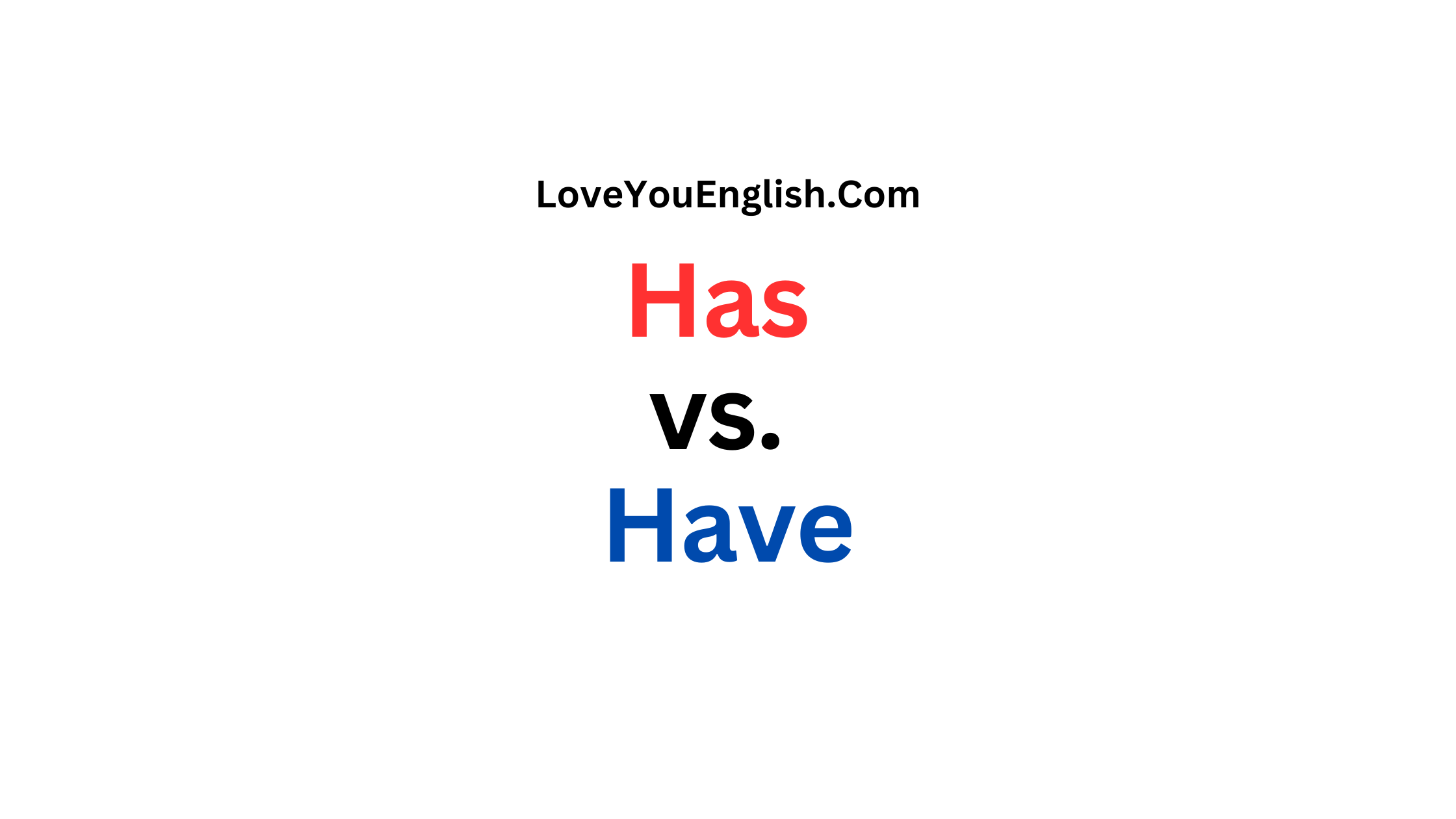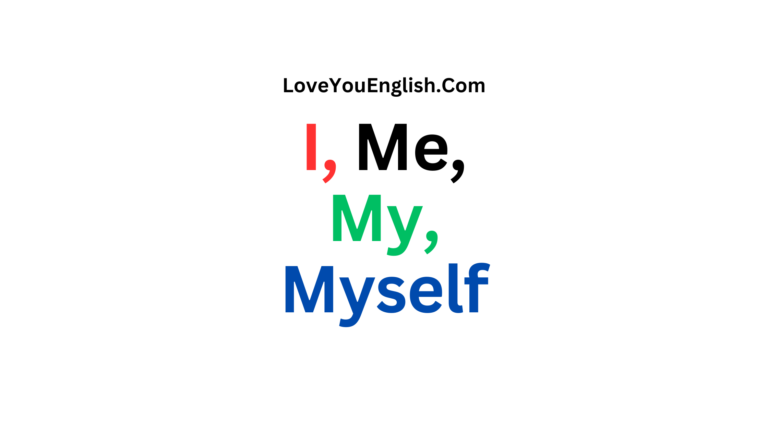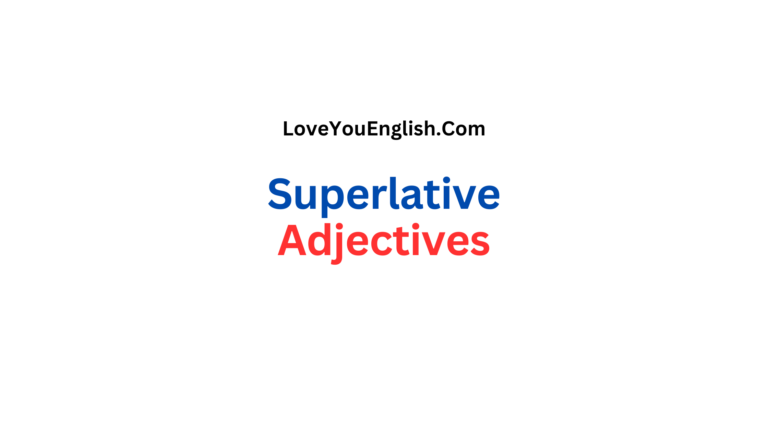Has vs. Have: What’s the Difference?
Has vs. Have: What’s the Difference?
English has many nuances that can be confusing, especially for native speakers.
One tricky area is knowing when to use “has” versus “have.”
Both words are forms of the verb “to have” and are important in our daily conversations.
So, how do you know when to use “has” or “have”?
This lesson will help you understand the differences and rules of these verbs, so you can improve your writing and speaking skills.
Understanding the Basics
Before we delve into the specifics, let’s start with the fundamentals.
Both “has” and “have” are forms of the verb “to have,” which is one of the most commonly used verbs in the English language.
This verb serves multiple purposes:
- As a main verb to express possession, relationships, or characteristics
- As an auxiliary verb to form perfect tenses
- In various idiomatic expressions
The primary difference between “has” and “have” lies in their usage with different subjects.
Generally speaking:
- “Has” is used with third-person singular subjects (he, she, it, one, a person’s name)
- “Have” is used with I, you, we, they, and plural nouns
However, as we’ll see, there’s much more to consider when choosing between these two forms.
“Has” in Detail
Let’s start by examining “has” more closely.
As mentioned, “has” is the third-person singular present tense form of “to have.”
Here are some key points to remember:
Subject Agreement
“Has” is used with singular subjects in the third person.
This includes:
- He, she, it
- Singular nouns (The dog, the company, John)
- Indefinite pronouns (everyone, someone, anybody)
Examples:
Forming Present Perfect Tense
“Has” is used as an auxiliary verb to form the present perfect tense for third-person singular subjects.
Examples:
- She has finished her homework.
- The movie has already started.
- My neighbor has lived here for twenty years.
In Idiomatic Expressions
“Has” appears in various idiomatic expressions when used with third-person singular subjects.
Examples:
- He has no idea what’s going on.
- The project has to be completed by Friday.
- She has what it takes to succeed.
“Have” in Detail
Now let’s turn our attention to “have.” This form is more versatile in its usage, applying to a wider range of subjects.
Subject Agreement
“Have” is used with:
- First-person singular and plural (I, we)
- Second-person singular and plural (you)
- Third-person plural (they)
- Plural nouns
Examples:
- I have three sisters.
- You have an interesting perspective.
- They have a lot of work to do.
- The students have a test tomorrow.
Forming Present Perfect Tense
Like “has,” “have” is used to form the present perfect tense, but for all subjects except third-person singular.
Examples:
- We have visited Paris twice.
- The children have grown so much this year.
- You have made an excellent point.
In Idiomatic Expressions
“Have” is used in numerous idiomatic expressions and phrasal verbs.
Examples:
- Let’s have lunch together.
- They have to leave early.
- We have been through a lot.
Common Mistakes and How to Avoid Them
Despite the seemingly straightforward rules, many people still struggle with choosing between “has” and “have.”
Here are some common pitfalls and tips to avoid them:
Collective Nouns
Collective nouns (e.g., team, family, group) can be tricky.
In American English, these are usually treated as singular, using “has.”
In British English, they can be either singular or plural depending on whether the group is considered as a unit or as individuals.
American English: The team has won the championship.
British English: The team have won the championship. (Emphasizing individual players)
The team has won the championship. (Emphasizing the team as a unit)
Compound Subjects
When you have a compound subject joined by “and,” use “have,” even if the individual parts would take “has.”
Incorrect: John and his sister has gone to the store.
Correct: John and his sister have gone to the store.
Indefinite Pronouns
Some indefinite pronouns like “each,” “everyone,” “everybody,” “anyone,” “anybody,” “someone,” and “somebody” are always singular and take “has.”
Example: Everyone has their own opinion on the matter.
Either/Or and Neither/Nor
With “either/or” and “neither/nor,” the verb agrees with the noun closest to it.
Examples:
- Either the students or the teacher has the answer key.
- Neither the teacher nor the students have the answer key.
Here and There
In sentences beginning with “here” or “there,” look for the true subject after the verb to determine whether to use “has” or “have.”
Examples:
- Here are the books you requested. (Books is plural, so use “are”)
- There is a cat in the garden. (Cat is singular, so use “is”)
Advanced Usage and Exceptions
As with many aspects of English grammar, there are some advanced uses and exceptions to be aware of when it comes to “has” and “have.”
Contracted Forms
In spoken English and informal writing, “has” is often contracted with pronouns and nouns:
- He’s (he has) been working all day.
- She’s (she has) already left.
- The dog’s (the dog has) been barking for hours.
Be careful not to confuse these contractions with “is” contractions (he’s = he is).
Conditional Sentences
In conditional sentences, “have” can be used with singular subjects in a subjunctive mood:
- If he have time, he will join us. (This is considered very formal and is rarely used in modern English)
More commonly, you’ll see:
- If he has time, he will join us.
- Had he time, he would join us. (Inverted form, omitting “if”)
Questions and Inverted Sentences
In questions and inverted sentences, “have” can sometimes be used with third-person singular subjects:
- Has he arrived yet?
- Have you any idea when he will arrive? (This form is more common in British English)
Existential “There”
With existential “there,” the verb agrees with the noun that follows:
- There have been many changes lately.
- There has been a significant improvement.
Noun Phrases
When a noun phrase acts as the subject, it can sometimes be confusing whether to treat it as singular or plural:
- The quality of the products has improved. (The subject is “quality,” which is singular)
- A number of issues have arisen. (“A number of” is treated as plural)
Historical Usage and Evolution
The distinction between “has” and “have” has evolved over time.
In Old English, the verb “to have” had many more forms depending on the subject and tense.
As the language simplified, we were left with primarily “has” and “have” in the present tense.
Interestingly, in some dialects and in certain historical contexts, you might come across “have” being used with third-person singular subjects.
Shakespeare, for example, sometimes used “have” where modern English would use “has”:
“He have no children.” – Macbeth
This usage is not considered standard in modern English but serves as a reminder of the language’s fluid nature over time.
“Has” and “Have” in Different English Varieties
While the basic rules for “has” and “have” are consistent across most English varieties, there are some subtle differences in usage, particularly between American and British English.
Collective Nouns
As mentioned earlier, American English tends to treat collective nouns as singular, while British English allows for more flexibility:
American English: The government has announced new policies.
British English: The government have announced new policies. (Emphasizing the individuals in the government)
The government has announced new policies. (Emphasizing the government as a single entity)
Sports Teams
In British English, sports teams are often treated as plural, while in American English, they’re singular:
British English: Manchester United have won the championship.
American English: Manchester United has won the championship.
Corporations and Organizations
Similar to sports teams, British English often treats corporations and organizations as plural, while American English treats them as singular:
British English: Microsoft have released a new operating system.
American English: Microsoft has released a new operating system.
Have Got
The phrase “have got” is more common in British English as a synonym for “have” in the sense of possession:
British English: I’ve got a new car. (I have a new car.)
American English: I have a new car. (Though “I’ve got” is also used)
“Has” and “Have” in Academic and Professional Writing
In formal writing, such as academic papers or professional documents, it’s crucial to use “has” and “have” correctly.
Here are some tips:
Consistency: If you’re using American English, stick to treating collective nouns as singular throughout your document. If you’re using British English and choose to treat them as plural, maintain this throughout.
Clarity: In cases where it might be ambiguous whether a subject is singular or plural, consider rephrasing for clarity.
Subject-Verb Agreement: Always ensure that your subject and verb agree, especially in complex sentences with multiple clauses.
Formal vs. Informal: In very formal writing, avoid contractions (don’t use “it’s” for “it has” or “who’s” for “who has”).
Passive Voice: Be mindful of subject-verb agreement when using passive voice constructions.
Example: “Mistakes have been made” vs. “A mistake has been made”
Teaching “Has” vs. “Have”
For educators or those learning English as a second language, here are some effective strategies for teaching the distinction between “has” and “have”:
Subject Pronoun Charts: Create charts showing which subjects go with “has” and which go with “have.”
Fill-in-the-Blank Exercises: Provide sentences with the verb omitted, allowing students to choose the correct form.
Error Correction: Give students sentences with incorrect usage and have them correct them.
Contextualized Learning: Use real-life examples, stories, or dialogues to demonstrate correct usage in context.
Mnemonic Devices: Create memory aids, such as “He, She, It – Has to fit” to remember third-person singular usage.
Interactive Games: Develop games or quizzes that make learning these distinctions fun and engaging.
Conclusion
Mastering the use of “has” and “have” is an important step in achieving fluency and precision in English.
While the basic rules are straightforward, the nuances and exceptions make this topic a rich area for study and practice.
Remember the key points:
- Use “has” for third-person singular subjects (he, she, it, singular nouns)
- Use “have” for all other subjects (I, you, we, they, plural nouns)
- Be aware of tricky cases like collective nouns, compound subjects, and idiomatic expressions
- Consider the differences between American and British English usage
- In formal writing, strive for consistency and clarity
Paying attention to these small details in your writing and speaking will help you communicate better and with more confidence.
Whether you’re a native English speaker working on your grammar or a student learning the language, knowing when to use “has” and “have” is an important skill that will benefit you in all types of communication.
Language is always changing, so it’s important to stay open to new ways of using words as English evolves.
By practicing and focusing on using “has” and “have” correctly, you’ll improve your English skills overall.







